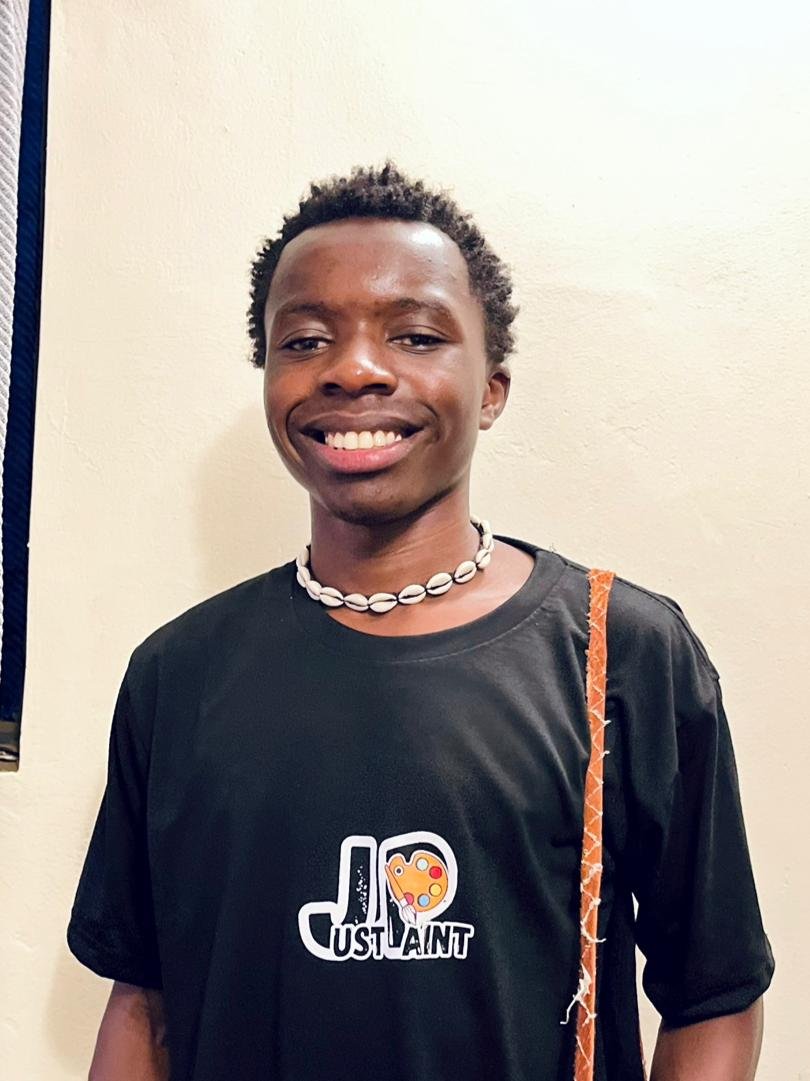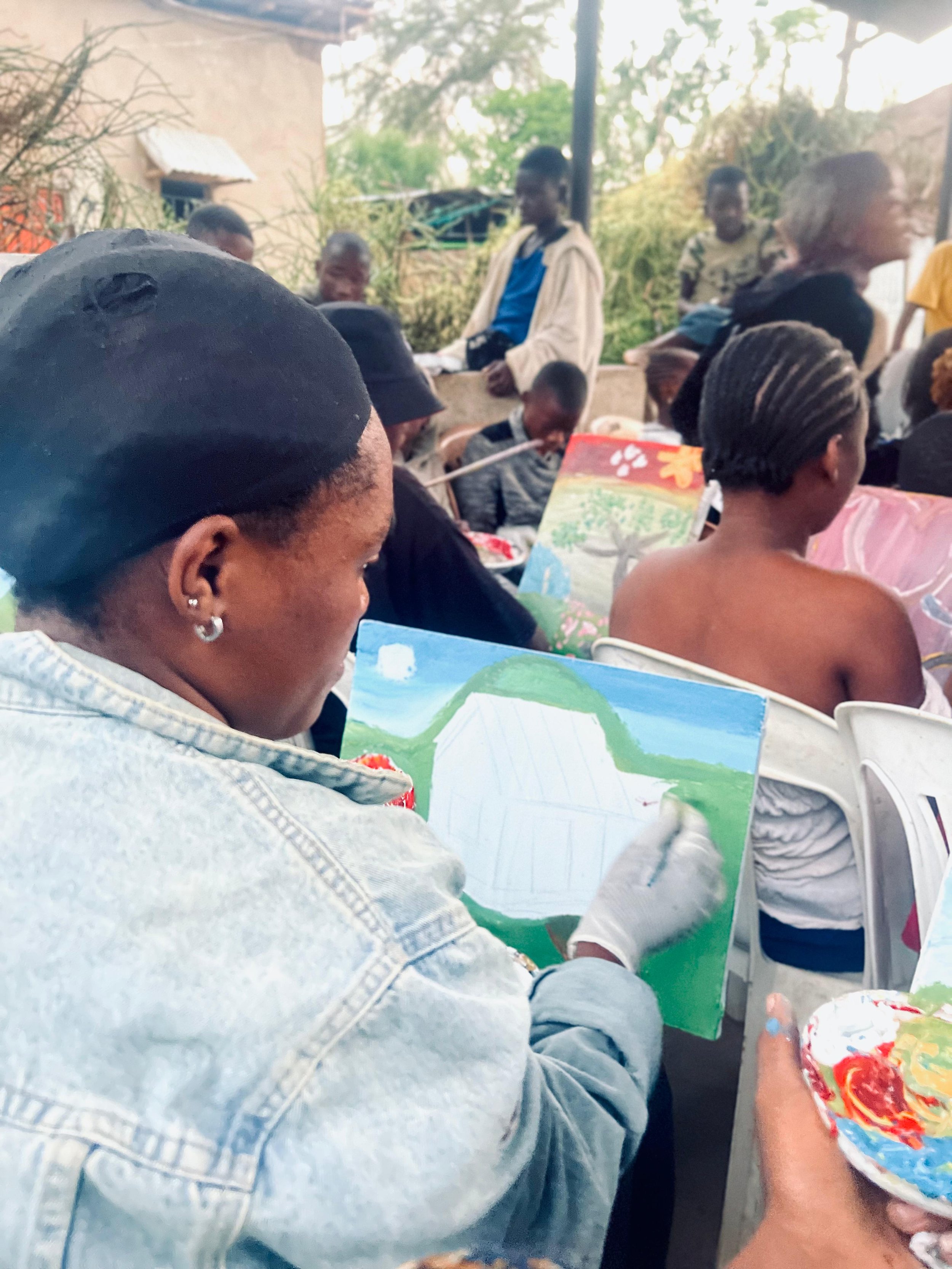Activist Spotlight: Aksanti Bienfait
An interview with Aksanti Bienfait – a Congolese refugee artist, based in Uganda, using his paintbrush to create system change.
Aksanti Bienfait is the founder of Just Paint, a community-driven initiative that operates within a refugee camp. His work revolves around using art as a tool for personal development, emotional healing, and social unity. Aksanti is passionate about bringing people from diverse backgrounds together through creative expression to help them navigate challenges, particularly focusing on mental health and community-building.
In September, we supported Aksanti in hosting an Activism Art workshop in Uganda for refugee communities to paint their visions for a just future and express their emotions when it comes to climate change. It was a powerful space for imagining, expression, connection, and creativity.
We asked Aksanti a few questions to learn more about his activist journey and how he is building an artivist movement from the ground up.
How did your activist and artistic journey begin?
My journey into activism and art began with a deep desire to provide a platform for expression and healing in communities facing adversity. I’ve always believed that art has the unique ability to connect people beyond words. In refugee camps, where people often experience isolation and trauma, it felt necessary to create a space for artistic expression. Witnessing how art could bring individuals together, I realised its potential to drive positive social change.
What inspired you to start Just Paint?
Just Paint is a community initiative that uses art as a means to foster mental health, emotional wellbeing, and unity in a Ugandan refugee camp. It was inspired by the need to create a space where people, especially those who are marginalised, can come together, express themselves, and heal. I was moved by the resilience of people in the camp, and I wanted to give them a creative outlet to tell their stories, break down social barriers, and find healing through art.
How can art be used to create positive change in the world?
Art has the power to break down barriers and foster empathy. Allowing individuals to express their emotions, thoughts, and experiences visually, creates a shared experience that transcends cultural or linguistic differences. Art can unite people around common causes, raise awareness about important issues, and drive conversations that lead to action. It provides an inclusive space where everyone’s voice can be heard, contributing to a more compassionate and understanding world.
How have you used art as a tool to improve mental health?
In Uganda, we have used art workshops to help individuals, especially those in refugee camps, express their inner emotions and experiences in a safe and supportive environment. Many have faced trauma, displacement, and loss, and art gives them a therapeutic outlet to process their emotions and find healing. This is important to me because mental health is often overlooked in these settings, and I’ve seen firsthand how creativity can provide relief and a sense of empowerment.
Can you tell us a bit more about the first Activism Art Session that took place in September?
The first Activism Art Session was a powerful gathering where we explored the theme of climate activism through art. Around 50 participants attended representing a diverse mix of backgrounds and cultures. The activities included collaborative painting sessions where participants expressed their concerns about climate change and shared personal stories through their artwork. The session ended with an open discussion, reflecting on how art can amplify awareness about environmental issues.
What was the biggest lesson you learned from hosting the first Activism Art Session that focused on climate activism?
The biggest lesson was how deeply connected people are to environmental issues, even in settings where daily survival takes precedence. It was eye-opening to see how participants linked their personal struggles to the broader impacts of climate change. It reinforced my belief that art is not just about individual expression, but also a powerful tool for raising awareness about global issues and encouraging collective action.
What is your vision for the future of Just Paint?
My vision for Just Paint is to expand our reach, offering more individuals the opportunity to express themselves through art. I hope to establish permanent spaces in more refugee camps, where art can continue to promote mental health, healing, and unity. I also envision using Just Paint to address broader social issues like climate change, gender equality, and education, creating a platform where creativity and activism intersect.
What keeps you hopeful and inspired?
I am inspired by the resilience and creativity of the people we serve. Despite facing significant challenges, their ability to find beauty, express themselves, and come together as a community through art is incredibly uplifting. The connections that are formed, the healing that takes place, and the knowledge that we are making a positive difference keep me hopeful for the future.




